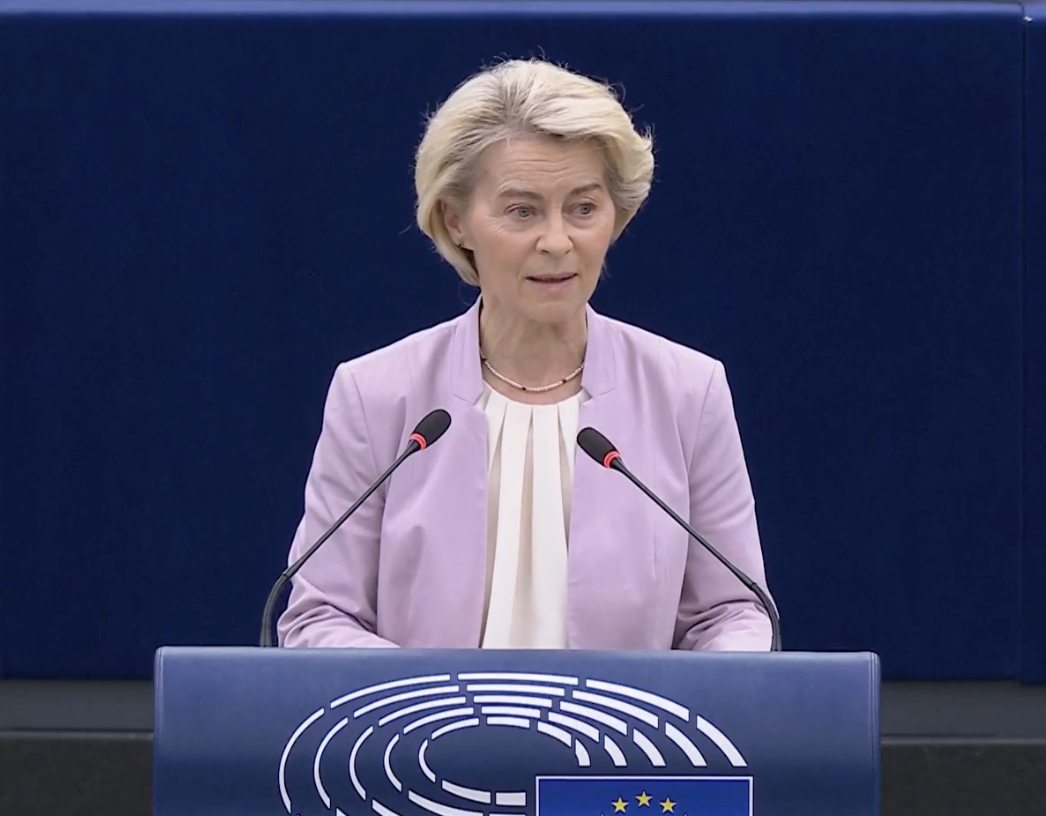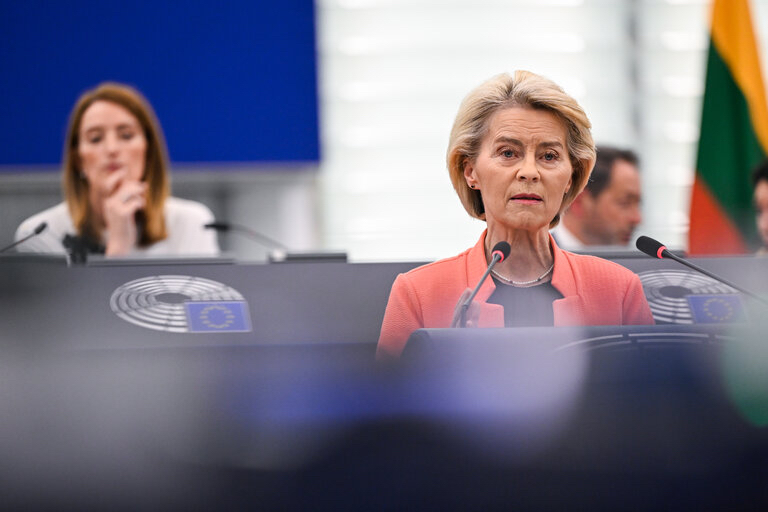The charge that von der Leyen’s leadership has drifted towards a “presidential system” is no longer the preserve of Eurosceptics or embittered political rivals. It is voiced openly within Brussels’ own power structures. Former European Commissioner Thierry Breton), hardly a populist rebel, has warned that the Commission is in danger of becoming a one-woman show, its powers hoarded in the Berlaymont, its senior figures reduced to decorative titles.
Breton has been blunt about what is at stake: the credibility of the institution and the influence of its member states, France included.
Such criticisms are not idle. They speak to a pattern that has grown more pronounced in von der Leyen’s second term: decisions taken in private, policies shaped by a tight inner circle, and entire portfolios reduced to ceremonial functions. The old model, in which commissioners debated proposals, refined compromises, and jointly owned the outcome, is fading fast. What remains is a pyramid, with von der Leyen at its apex and a narrowing base of input from below.
The absence that delays the Union
Observers within Brussels point to telling examples. On more than one occasion, key policies have been delayed—not for want of consensus among the commissioners, nor because of technical snags in drafting—but simply because von der Leyen was away. In a genuine collegiate body, such absence would be inconsequential; the machinery would continue to run. In today’s Commission, everything waits for the president’s nod. It is not merely a question of symbolism. A Union that prides itself on agility in crises has bound itself to the diary of one person.
This over-centralisation brings with it the obvious risks of bottlenecks, errors, and the deadening effect of uniform thinking. The European Union governs a population of nearly 450 million, with economies and cultures as varied as Lisbon’s and Tallinn’s. It cannot be served well by a command structure that filters every decision through a single office. Yet the trend continues, each month drawing more responsibility upwards and leaving less room for independent judgment lower down.
The fractured budget process
The recent debacle over the €2 trillion budget proposal is a case in point. In theory, the preparation of the multiannual financial framework is a joint enterprise, with the commissioners responsible for their policy areas feeding into the whole. In practice, the figures were held back until the last minute, revealed to some commissioners only as they were asked to sign them off. Those left in the dark were understandably furious.
This was not a mere lapse in etiquette. By denying commissioners access to the full financial picture, von der Leyen denied them the ability to defend their departments or propose trade-offs. The effect was to fragment budget control, turning what should have been a coordinated plan into a series of disconnected fragments—each dependent on the central office to make sense of the whole. For an institution that preaches transparency to its member states, the irony was rich indeed.
The backlash was swift. Germany, normally a dependable ally in budgetary matters, voiced its discontent almost immediately. Several smaller states complained of being presented with a fait accompli. The fault lay not in the sums themselves—though there was plenty to criticise there—but in the manner of their presentation. It reeked of top-down decree rather than the product of a political community.
Sidelining the commissioners
Perhaps the most corrosive aspect of this leadership style is the sidelining of other commissioners. These are, in theory, some of the most powerful political figures in Europe, appointed by their national governments, entrusted with entire policy portfolios, and intended to act both as European statesmen and as guardians of the common interest. Under von der Leyen, many have been reduced to the role of messengers, tasked with selling policies they had no part in shaping.
This is not simply a matter of bruised egos. Commissioners who feel excluded from real decision-making are less able, and less inclined, to build the coalitions needed to implement those decisions across the Union. A climate policy devised behind closed doors may be technically sound, but it will be politically brittle if its supposed champions in Brussels feel no genuine ownership of it. That brittleness is already visible in the faltering momentum of the Green Deal, where the president’s retreat from certain targets has alienated both environmentalists and industry advocates.
Breton’s warning
Thierry Breton’s intervention is especially telling. As Internal Market Commissioner, Breton was responsible for one of the most consequential portfolios in the Commission, overseeing everything from digital regulation to industrial policy. His criticism, then, is not the grumbling of a marginal figure but the considered warning of an insider. By concentrating too much power in her own hands, Breton argues, von der Leyen not only risks alienating her colleagues but also undermines the legitimacy of the Commission itself.
Breton has gone further, lamenting the loss of French influence within the Berlaymont. While some will dismiss this as national self-interest, it reflects a broader truth: when the Commission’s president rules from a narrow circle, the balance between member states becomes skewed. Smaller states lose their voice; larger ones see their influence ebb and flow at the whim of a single individual. This is not the European ideal; it is court politics.
The dangers ahead
Why does this matter? Some might argue that a more centralised Commission is precisely what the EU needs—an executive capable of swift action in a volatile world. But the EU is not, and cannot be, a unitary state. Its authority rests on the consent of its member governments and the trust of its citizens. Over-centralisation erodes both.
In the short term, a presidential Commission may appear more decisive. In the long term, it breeds resentment, undermines legitimacy, and invites the very paralysis it claims to avoid. Member states that feel excluded from decision-making are more likely to drag their feet on implementation, to water down legislation in the Council, or to defy it outright. The European Parliament, already suspicious of von der Leyen’s methods, will find fresh cause to challenge her authority.
The no-confidence motion she faced in July—though comfortably defeated—was a warning shot. The fact that it was brought by the far-right does not diminish its significance; what mattered was the tone of the debate. Parties that ultimately backed von der Leyen nonetheless used the occasion to air their grievances. The Socialists demanded guarantees on the European Social Fund. The Greens lamented her environmental U-turns. Renew Europe complained of being taken for granted. The coalition that sustains her is brittle, and she knows it.
A better path
There is still time for von der Leyen to reverse course. Collegial governance is not a relic; it is a necessity in a political system as complex as the EU’s. Restoring it would mean more than inviting commissioners to more meetings. It would require sharing information openly, allowing genuine debate, and accepting that consensus sometimes means compromise.
Such an approach would not be a sign of weakness. On the contrary, it would reflect confidence in the institution she leads. It would acknowledge that the EU’s strength lies in its diversity of perspectives and the legitimacy that comes from collective ownership of its decisions. A president who listens is more likely to be obeyed; one who dictates from on high will eventually find herself speaking into a void.
The choice before her
Ursula von der Leyen entered European politics as a consensus-builder, a figure adept at bridging the gap between Berlin and Brussels, between centre-right caution and progressive ambition. In her first term, that skill served her well—though even then, critics noted her preference for tightly controlled messaging. In her second term, the tendency has hardened into habit.
The choice before her is stark. She can continue down the presidential path, relying on a shrinking inner circle, hoarding power until even her allies begin to plot an alternative. Or she can reopen the doors of the Commission, trusting her colleagues to share the burden of leadership. The first course offers the illusion of control; the second offers the reality of durability.
The European Union will endure whichever path she chooses. But the Commission’s standing—its ability to act as the honest broker of the European project—depends on how it is led. A president who governs as a first among equals will find her authority strengthened, not diminished. One who governs as an unaccountable executive risks leaving the Union weaker than she found it.
In the end, the question is not whether Ursula von der Leyen can centralise power. It is whether doing so will serve the Europe she claims to champion. On the evidence so far, the answer is clear: the more power she hoards, the less effective she becomes.
_____________________________________________________________________________________________________________________________

Read Also: URSULA VON DER LEYEN’S BUDGET IS A SYMPTOM OF A DEEPER DEMOCRATIC MALAISE
Another day, another power-grab in Brussels. Ursula von der Leyen’s unveiling of the EU’s 2028–2034 budget was billed as a strategic moment—Europe’s grand vision for its post-Covid, post-Ukraine, post-Brexit future.
What it revealed instead was the hollowness at the heart of the European project: a muddled, technocratic behemoth blind to its own democratic deficit and increasingly divorced from the people it claims to represent.
_____________________________________________________________________________________________________________________________
Main Image: Photographer: Laurie DIEFFEMBACQ © European Union 2025 – Source : EP Usage terms: Identification of origin mandatory
Post Views: 933
